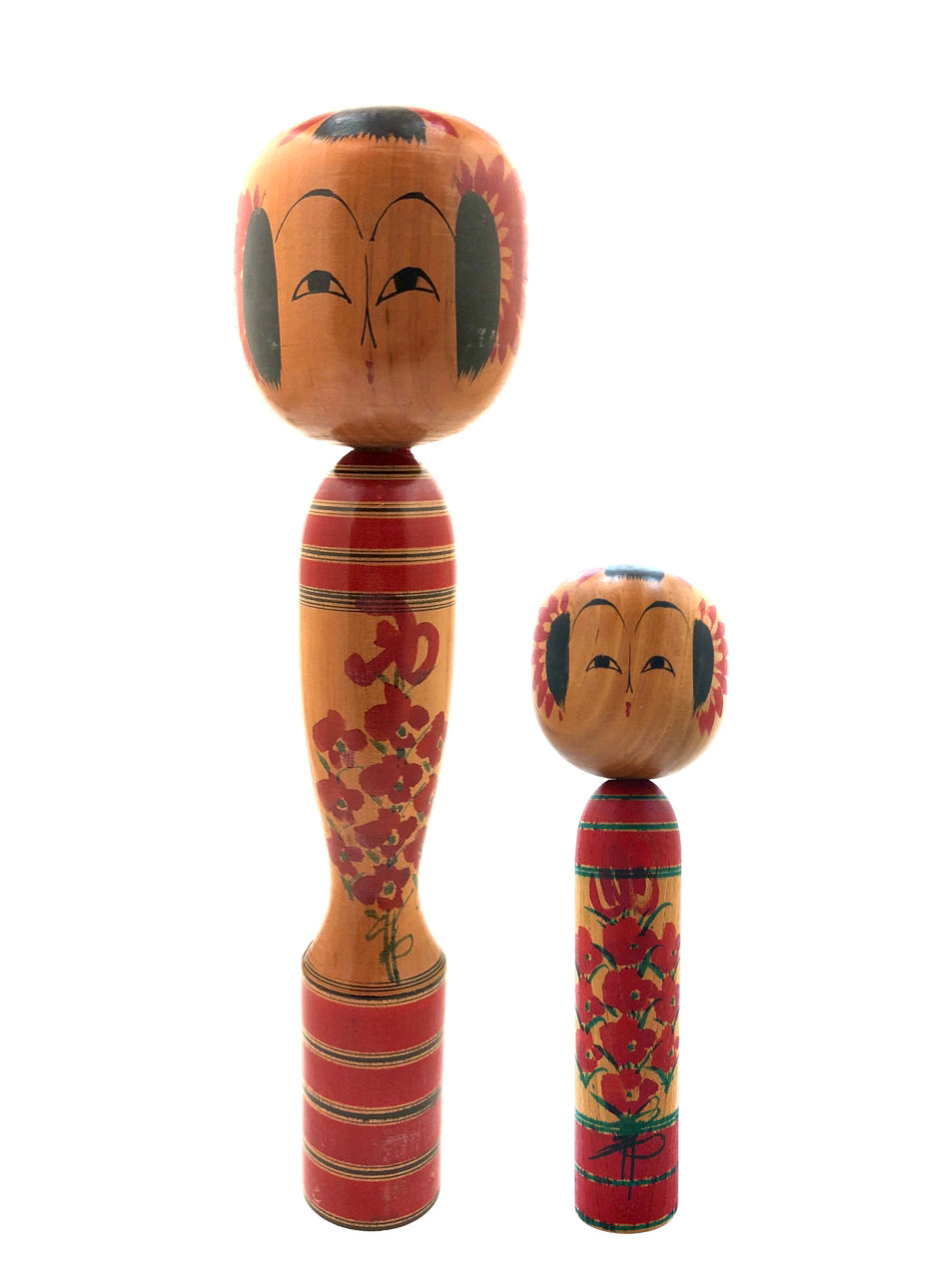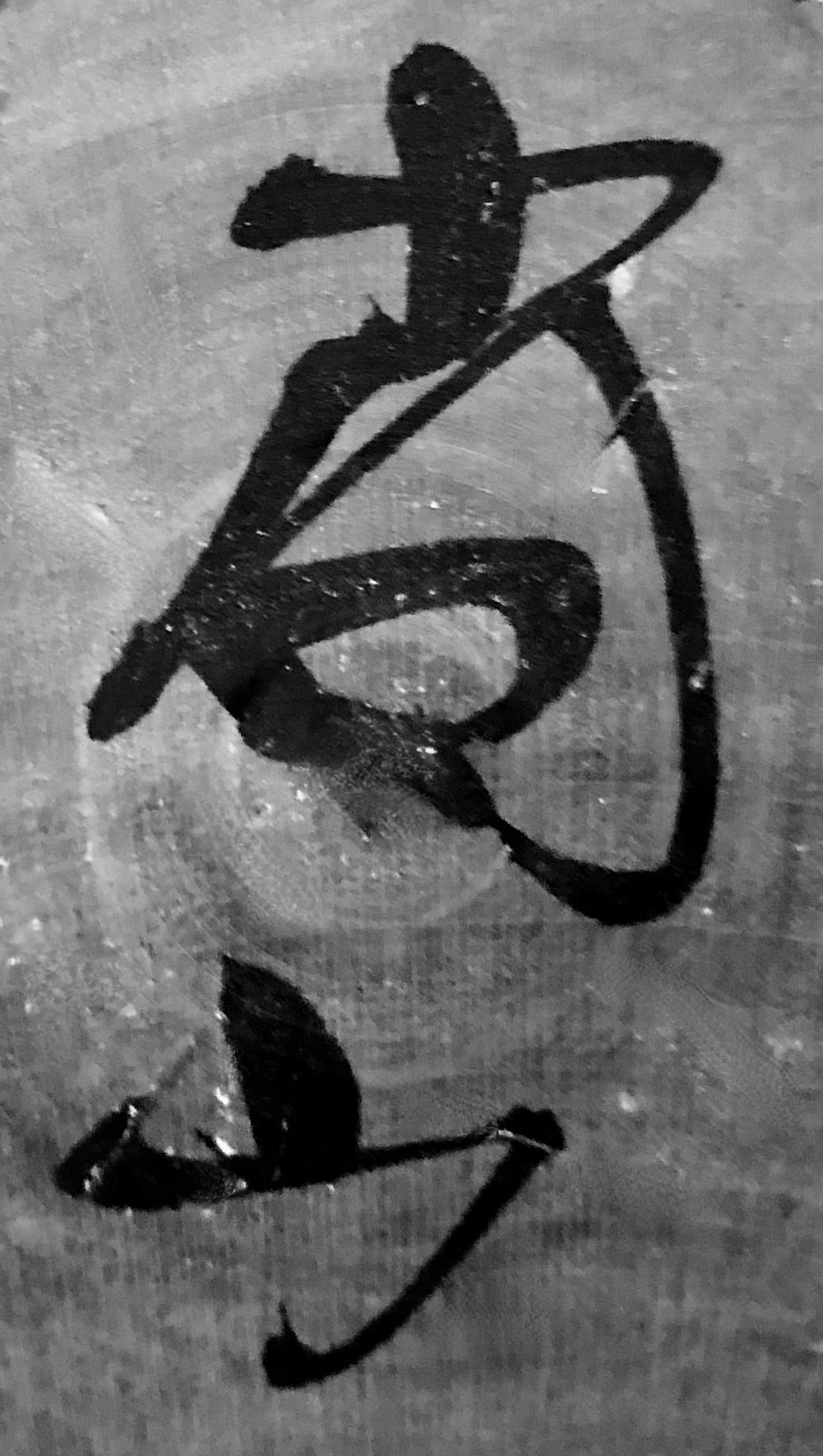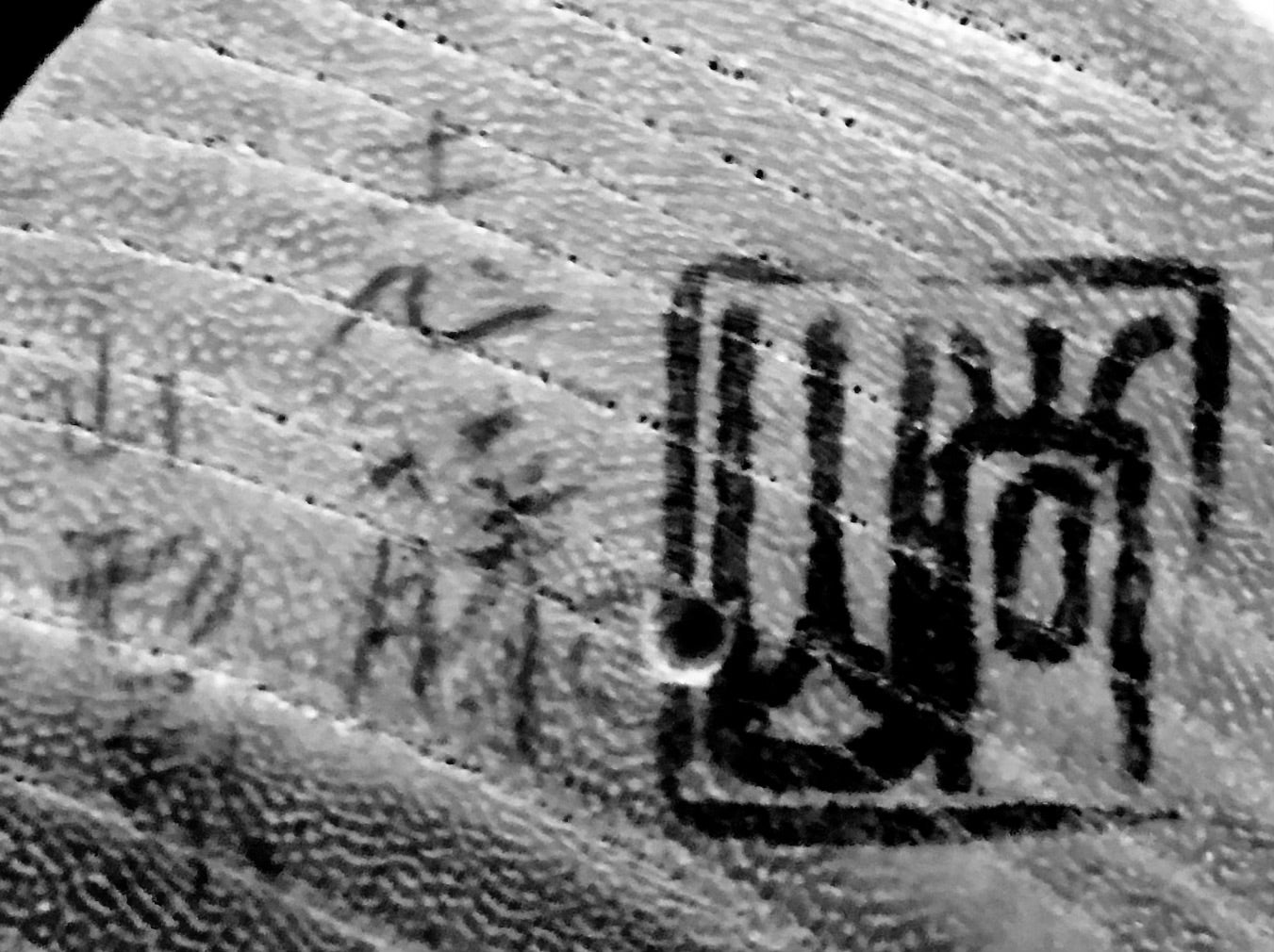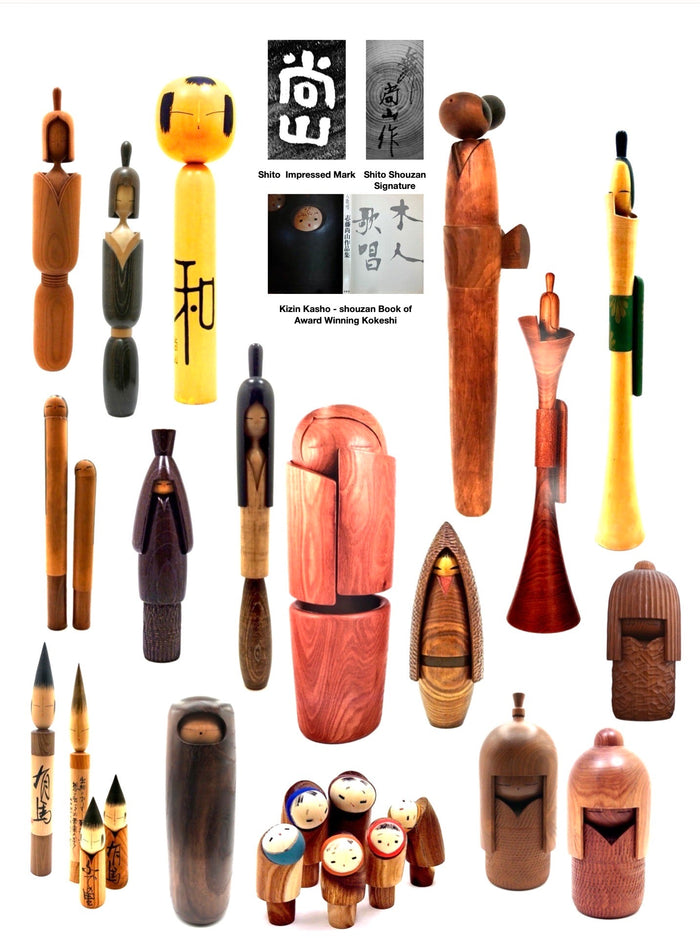


Vintage Traditional Kokeshi entitled: “Tīn'eijā to kodomo | Teenager and Child” by Shouzan, Shido | 1932- 1995
Dimensions: 14-0”h; 9-0”h
You might ask why are these Kokeshi are included here. Both of these dolls represent Shouzan-san's beginnings prior to making Sosaku Kokeshi in 1958. He had apprenticed with Yamagata Family carvers before moving onto Sosaku doll design. So historically the two dolls represent his foundation, understanding and evolution in Kokeshi making.
These two dolls represent Traditional Yamagata Kokeshi which show larger heads with the split nose (ware-bata), and the double line eyes, (futae-mabuta), with bangs and hair fringes with bows, on slender bodies decorated with plum flowers. Each body incorporates the traditional circular- style red and green treatment on the top of the bottom undergarment, that is a very meticulous method known as ‘Rokoru Moyo’. Both are quite top-heavy, leading some people to believe that originally they were much smaller, and designed to be hand-held toys, rather than freestanding dolls. Both are signed in script by Shouzan-san on the bottom.
Condition: Both pieces are in excellent, perfect condition and commensurate with age with wonderful workmanship, turning, and painted features. The piece meets all the standards of collectible Folk Art.

Artisan
Woodworker: Shido, Shouzan
1932-1995
Biographical History:
Shouzan began making Sosaku Kokeshi in 1959, soon after he graduated from Chuo University with a law degree. He is considered by Kokeshi collectors and critics alike to be arguably the most influential artist in the world of Sosaku Kokeshi doll-making. Shido-san’s main focus was depicting unadorned Northern girls in the traditional “Mino”, or Snow Coat, but he also produced tall, thin dolls, which were sparsely decorated. His keen sense of design, minimal use of color, and simple elegant shapes set him apart from his peers, making him one of the most collectible artists emerging from the creative period of the ‘60s winning various awards since 1961. He served as a judge of the All Japan Kokeshi Contest from 1970 to 1976. During that time Shozan published a book entitled Kizin Kasho comprising examples of his award-winning Kokeshi. His dolls have been collected and exhibited worldwide and winner of the Prime Minister’s Award, among many other awards.
Collector's note – descriptive qualities, standard characteristics & ornamentation styles:
Shito-san loved studying the use of combining different types of wood to gain the desired effect and to give dimension to his pieces. He also enjoyed creating slender, tall dolls to support the fact that they resemble the tall, thin trees seen throughout Japan. He incorporated a repetitive textural pattern called ‘Harmonic Chatter work’ to enhance the natural qualities of the wood in many of his works. He particularly enjoyed the textural qualities of ‘Chattering’ on the rain/snow coat, (Minomushi), which is a favorite theme, executed with minimal painted ornamentation, with an emphasis on the natural wood. In general, it is said that Japanese culture is one of modesty and humility. Occasionally saw different types of headdresses, one of which he called a ‘Tsunokakushi’, which is a wide headdress or hood, that covered elaborate hairstyles. We are told that the Japanese people regulate their behavior and response by reading faces and the eyes of others. Here, as well as elsewhere, you will see many examples of different characteristics of the eye's expressions. His most famous doll, which was considered a favorite was called “Mai”, a dancer, which was an elegant and slender doll with a beautifully formed Kimono focusing on traditional hair design (Mage) with an emphasis on a brightly colored “obi” which brings forth the best use of complex geometry to create traditional Japanese clothing elements which were created in 1970.
Shito-san was a prolific artist/woodworker of Kokeshi dolls some of which were whimsical, some focusing on calligraphy citing haiku (poems). We additionally see unusual subjects focused on Zen Buddhism and figures of Daruma, (Bodhidharma) of which most were made in a “roly-poly” type figure seen throughout festivals in Japan.
Explore & Learn More about Woodworker: Shido, Shouzan